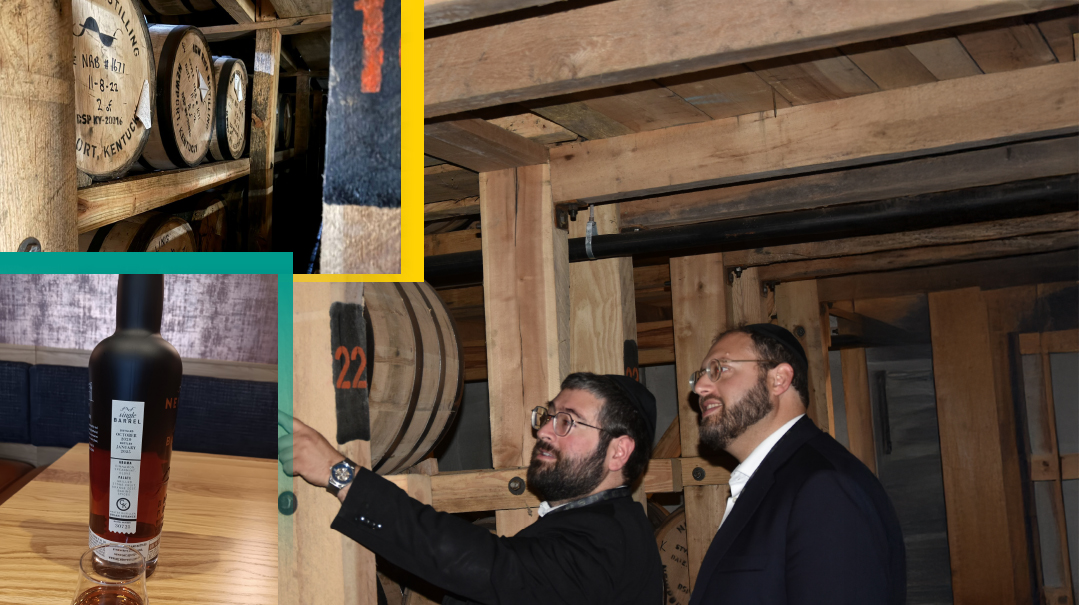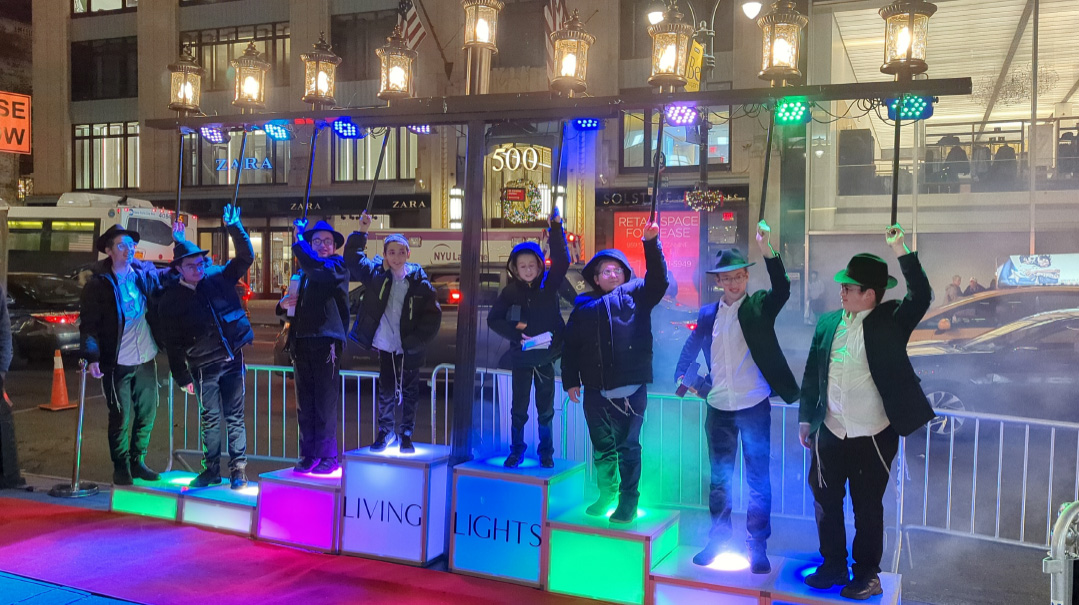Taster’s Choice

When Kentucky’s New Riff distillery debuted its premier kosher line, a group of frum testers were on hand

Photos: Family archives
For some people, the metaphors on the back of a whiskey bottle — “notes of sherry,” “sweet wood aromas,” “hints of molasses,” “cherry undertones” — are simply marketing rhetoric. But a connoisseur can expound on the subtle differences in every shot, and when Kentucky’s New Riff distillery debuted its premier kosher line, a group of frum testers were on hand to prove it
ONa beautiful Thursday morning, our small group of hashkamah minyan members from Congregation Zichron Eliezer in Cincinnati, Ohio, filed into the tasting room of the New Riff distillery in Newport, Kentucky. The two oversized chandeliers overhead established a Brooklyn Hungarian ambience, but the five test tubes with brownish liquid in front of each seat gave off more of a science lab vibe. A decade after opening, the distillery was scheduled to bottle its first certified kosher run, and we were here to help make it happen.
Kentucky has been home to the bourbon industry since the late 1700s — hence the moniker “Bourbon Country” — and it’s fascinating to watch the process, which is still remarkably similar to the way it’s been done for hundreds of years. Corey, who was giving us the guided tour of New Riff’s facilities, led us through one of the distillery’s three rickhouses, the buildings in which this delicious bourbon is stored.
This five-story rickhouse — which is on the smaller side for a rickhouse — has no temperature controls, only windows, allowing the 14,000 barrels stored inside to age naturally. Some places are computerized and control temperature, humidity, and other factors, but New Riff is making bourbon old Kentucky-style. With each barrel outputting 200 bottles within just a few years, we’re talking 2.8 million bottles of bourbon. At an average of $50 a bottle, this nondescript concrete building is worth $140 million. (We were standing in a gold mine and couldn’t help wondering what their insurance policy costs.)
When we asked Corey if the barrels are moved around at all during the four-year aging process, he explained that the taste of each barrel varies based on its spot, and they don’t want to interfere with that process. (Other distilleries move barrels throughout the aging process to keep the taste of the final product uniform. It’s similar to your outdoor gas grill; even if all the knobs are turned to the highest setting, the back center and the front left never give the same sear, so you rotate your meat. Here at New Riff, there is no rotating.)
“Also, moving them around would be a lot of manual labor,” he added with a smile.
He wasn’t kidding. Each barrel weighs over 500 pounds, and when I surreptitiously tried shifting one of them, it didn’t budge. There’s an entire apparatus of specialized elevators and hoists (think forklifts) that deal with the transport once the bourbon matures and is ready to be bottled.
Prior to slumbering in the rickhouses, the mash bill of non-GMO grains at 65% corn, 30% rye, and 5% malted barley that make up the bourbon recipe are mixed with a special limestone water used in the distilling. This water, which comes from the Ohio River Alluvial Aquifer, is loaded with minerals, naturally filtered, and stays at an ideal constant cool temperature the entire year. The New Riff distillery sits on this aquifer, giving it access to some of the best water in all of Kentucky.
Corey told us that each standard New Riff bottle is made from bourbon taken from 50 different barrels, blended in large proofing tanks and diluted with water that’s been filtered by reverse osmosis (the water is added to lower the alcohol content). Connoisseurs prefer their bourbon from one single barrel instead of the standard blended version, Corey explained, because it will have the flavor unique to that barrel. Those with stronger stomachs appreciate “cask strength” alcohol levels; the bourbon is bottled straight from the barrel and no water is added to proof down the alcohol content.
The bourbon we would be sampling was single barrel at cask strength. But we weren’t just here for the tour; we were on a mission. The distillery was ready to produce its first kosher run, and it was our job to select the barrel that would premiere for kosher consumers.
Oops! We could not locate your form.







